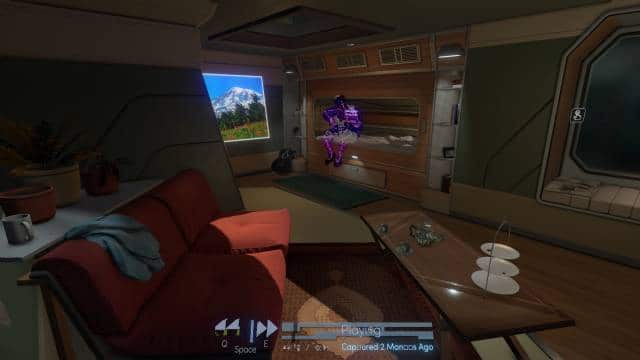What happened?
As Amy Ferrier, you have to finish the job for which you have been contracted: embark inside the deserted space station called Tacoma and recover ODIN, the artificial intelligence of Venturis Corporation that lies inside. Waiting for the files to be transferred, Amy comes across crew records and in various details that will reveal what has actually happened inside.
Being Tacoma’s only story-based adventure, almost unimaginable elements of gameplay, with no jigsaw and no fights, could be expected to be very careful with the screenplay.Fullbright has certainly done a great job in that direction, yet there is a feeling of detachment as the story tells us – through holograms and elements to increased reality – in front of our eyes.
It is not so much the absence of a family environment to create this barrier, but it is more of a prospective question that tends to observe (almost stalking) the different personalities that were on Tacoma, making them all extraneous and distant.
The rhythms and escamotages to ideally divide into the stakes of the plot are good, while the structure through which it literally “navigates” between the information is somewhat weak and shows the side to a repetition partially averted by the shortness of the dialogues. If nothing else, the player has the ‘ absolute control over what is being told: it has the ability to unlock audiovisual sequences and to rewind or forward them at will, even pausing them when the “ghosts” of the crew allow interaction with the enhanced reality panels that carry with them .
When this happens,Tacoma shows perhaps his best part: he further deepens the crew’s different personalities, lets them know their humanity, their preferences, everyday worries, their stories. And it does it with incredible naturalness, highlighting the routines that ultimately belong to everyone, which can be understood because they do not rely on the stereotypes we’ve always seen in video games.
The men and women who were inside Tacoma are credible and real, despite all the game you will only see the stylized projections of their bodies.
When you interact with the panels, we said, you will be able to access many of their personal information, such as exchanging jokes through a chat or by mail. Various files are corrupt and corrupt, so there is never a risk of being in front of textures that would even annoy even the toughest advocates of narrative adventures, and there is no need to really read everything to advance the game. However, it becomes essential if you want to have a thorough and thorough picture of the story.
What destiny?
Among other things, it reveals the most important information too soon, effectively extinguishing the flame of curiosity that glowed glowingly when playing at Gone Home, which, unlike Tacoma, knew how to build the climax and engage it to the end.
Tacoma however gives more tools to the player so that he can discover the magnificent work Fullbright has done on the characters: he introduces them into their rooms and immerses him in a credible context, he makes them look at their photos, their habits, how to express themselves and , above all, makes him aware of the dynamics of daily life that crossed the crew members just before the disaster took place.

